World Oceans Day: Photos from the North Pole to the South Pole
- Published
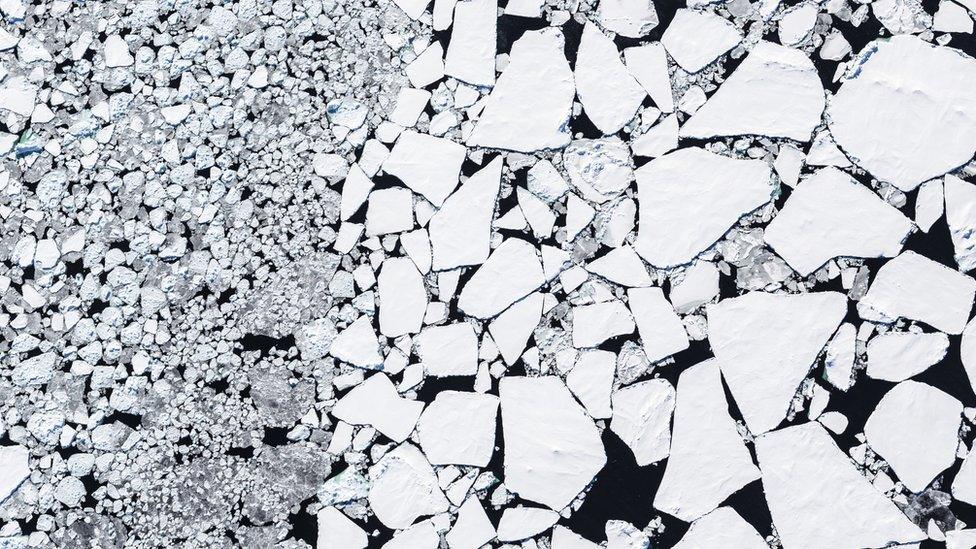
This photo shows the sea ice in Svalbard, which is in the Arctic circle. Temperatures in the Arctic are warming quickly, which means there are lower levels of sea ice, according to charity World Wildlife Fund (WWF).
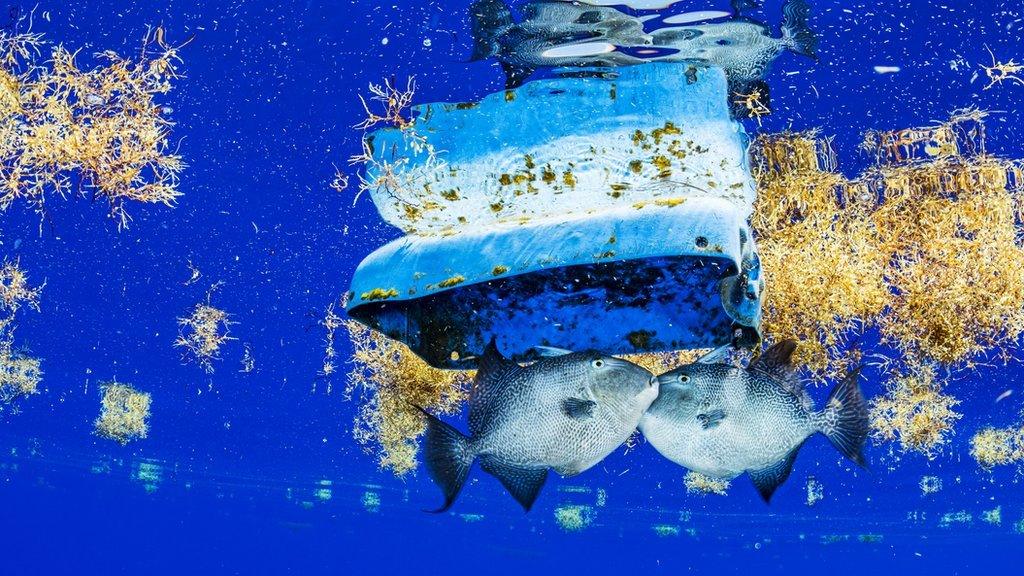
In this photo you can see two trigger fish surrounded by plastic rubbish in the Sargasso Sea, in the North Atlantic Ocean. The Sargasso Sea is named after a seaweed that creates a rich habitat for sea turtles and baby fish. Plastic pollution is a threat to this habitat. WWF said we must stop the amount of plastics leaking into our oceans, or there will be an environmental disaster.
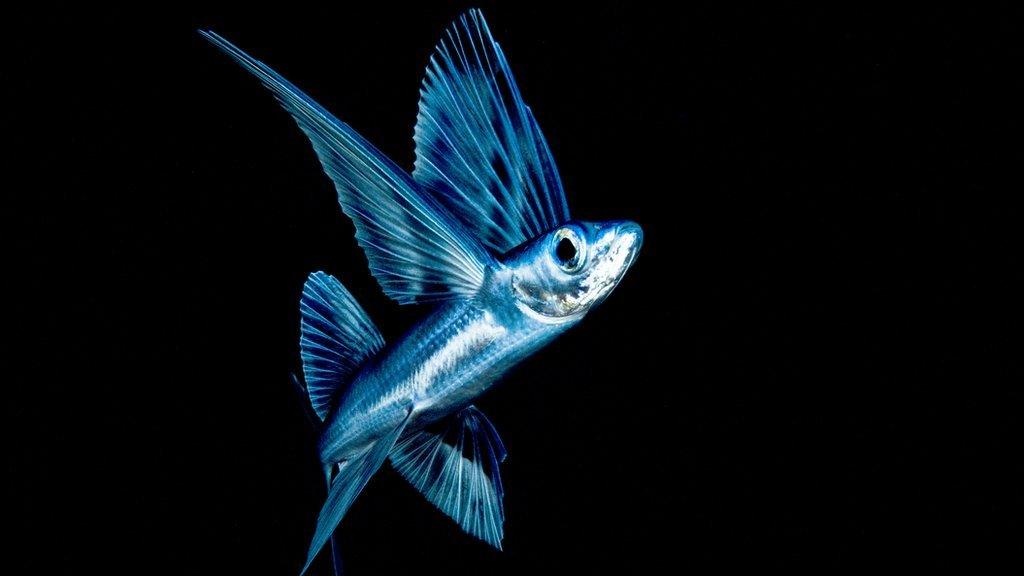
Check out this cool flying fish, photographed at night, in the Sargasso Sea in the North Atlantic Ocean. The Sargasso Sea is home to lots of different marine life including green sea turtles. Greenpeace found 1,298 fragments of micro plastics in just one sample they collected from the Sargasso Sea. Many fish end up eating these micro-plastics.
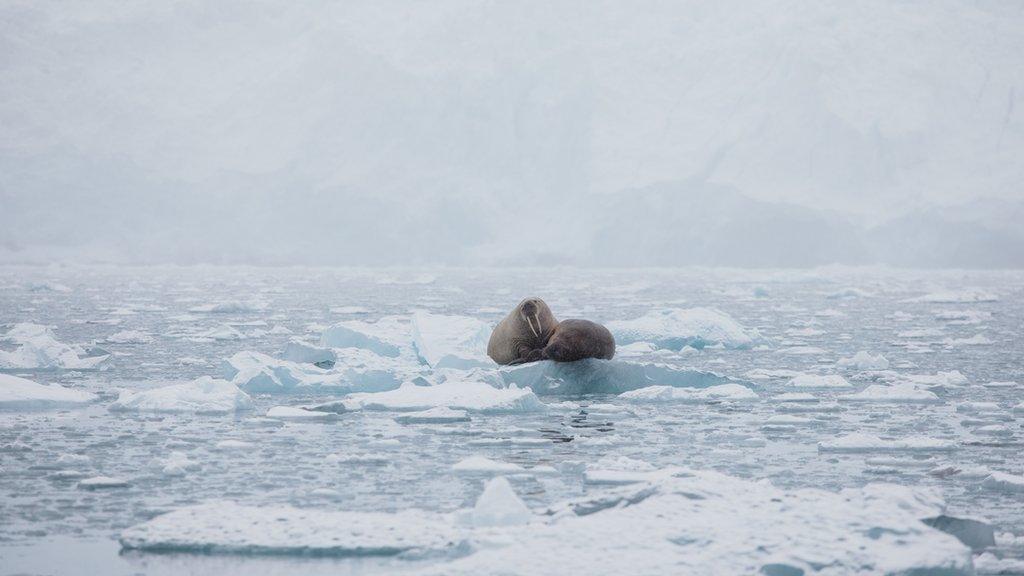
Look at this walrus family resting on top of a sheet of ice in Svalbard, located between Norway and the North Pole. Walruses depend on sea ice for feeding and resting, and because of climate change the sea ice is melting away, destroying their natural habitat.
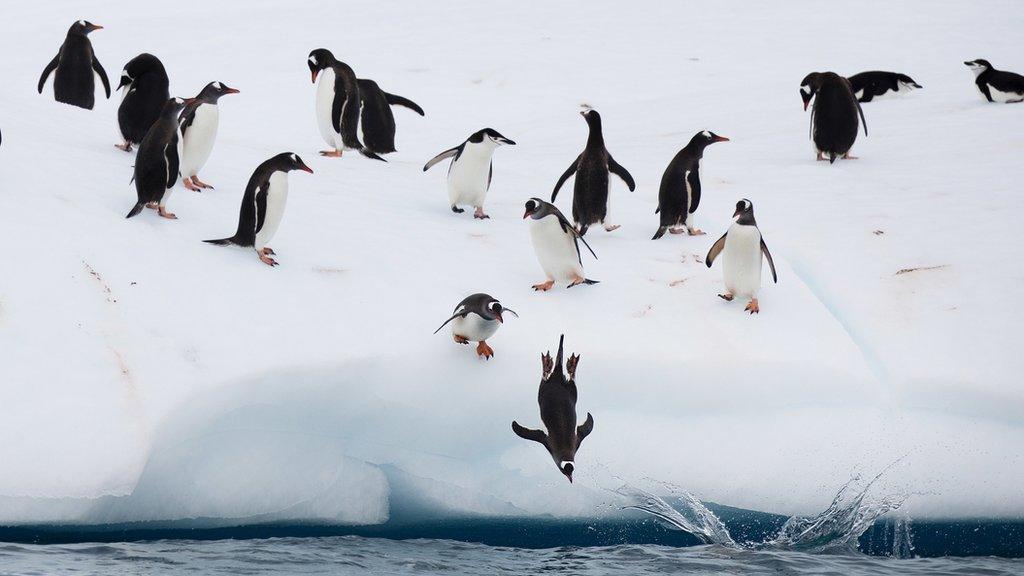
These chinstrap and gentoo penguins are jumping off an iceberg to go fishing in Half Moon Island, Antarctica. Temperatures are rising three times faster in Antarctica than anywhere else in the world, which leads to glaciers melting and sea levels rising. Less sea ice means penguins have to swim further to find food.
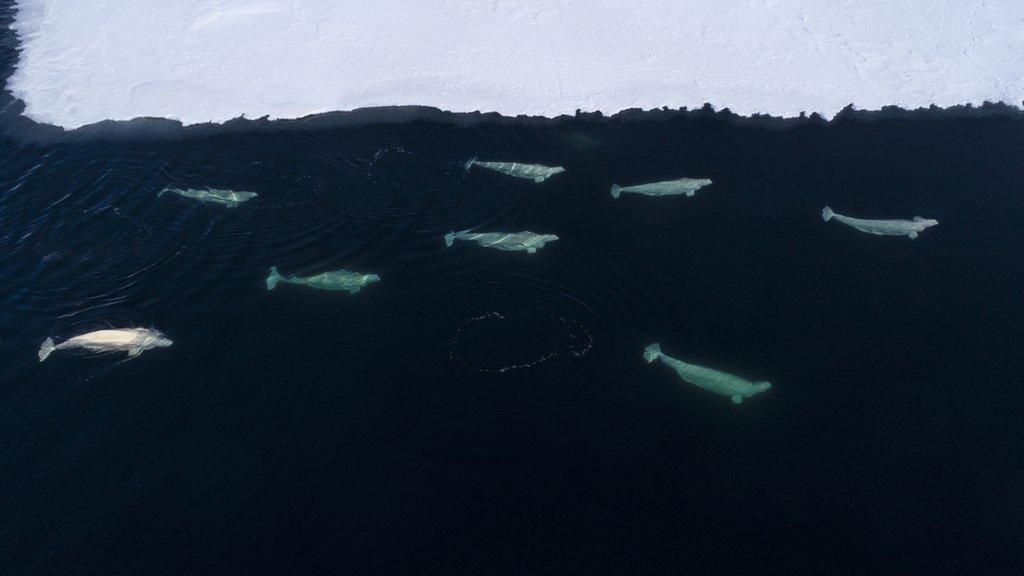
This picture shows beluga whales swimming in the ocean. Whales face many serious threats out in the sea including pollution and litter according to Greenpeace. They can choke on plastic or get tangled in fishing equipment. Whales are really important to the ocean's ecosystem. Did you know their poo provides nutrients to other ocean life?

Check out these icebergs which were photographed in the South Orkney Islands, Antarctica. On average, only one-tenth of an iceberg is above water!
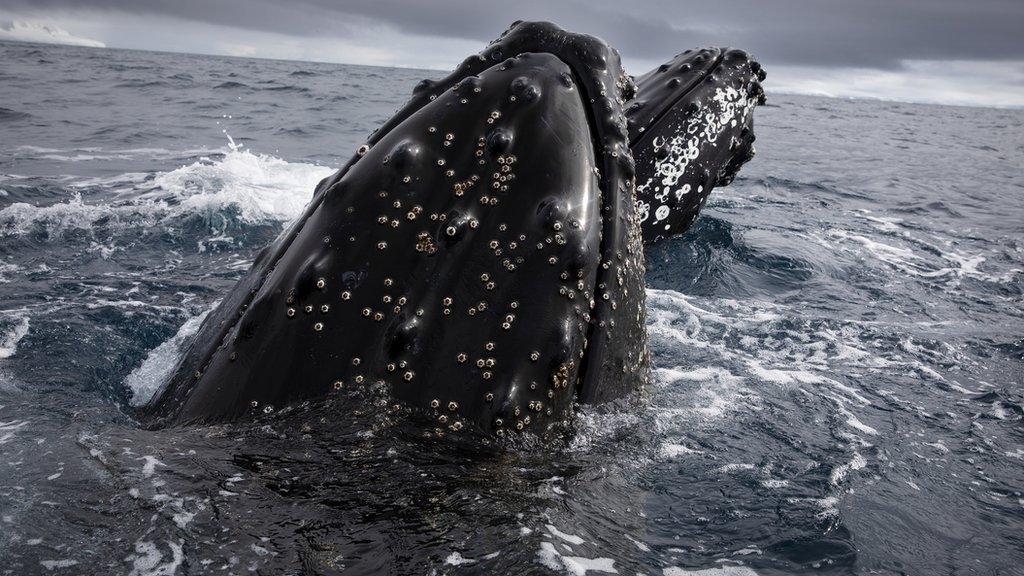
This incredible picture shows humpback whales popping out of the ocean in Antarctica. Although humpback whale numbers have risen over the years, there are still more than 1000 whales killed every year because of commercial whaling, according to WWF. Commercial whaling means hunting whales for their meat, oil and blubber.
- Published5 June 2020

- Published28 January 2020
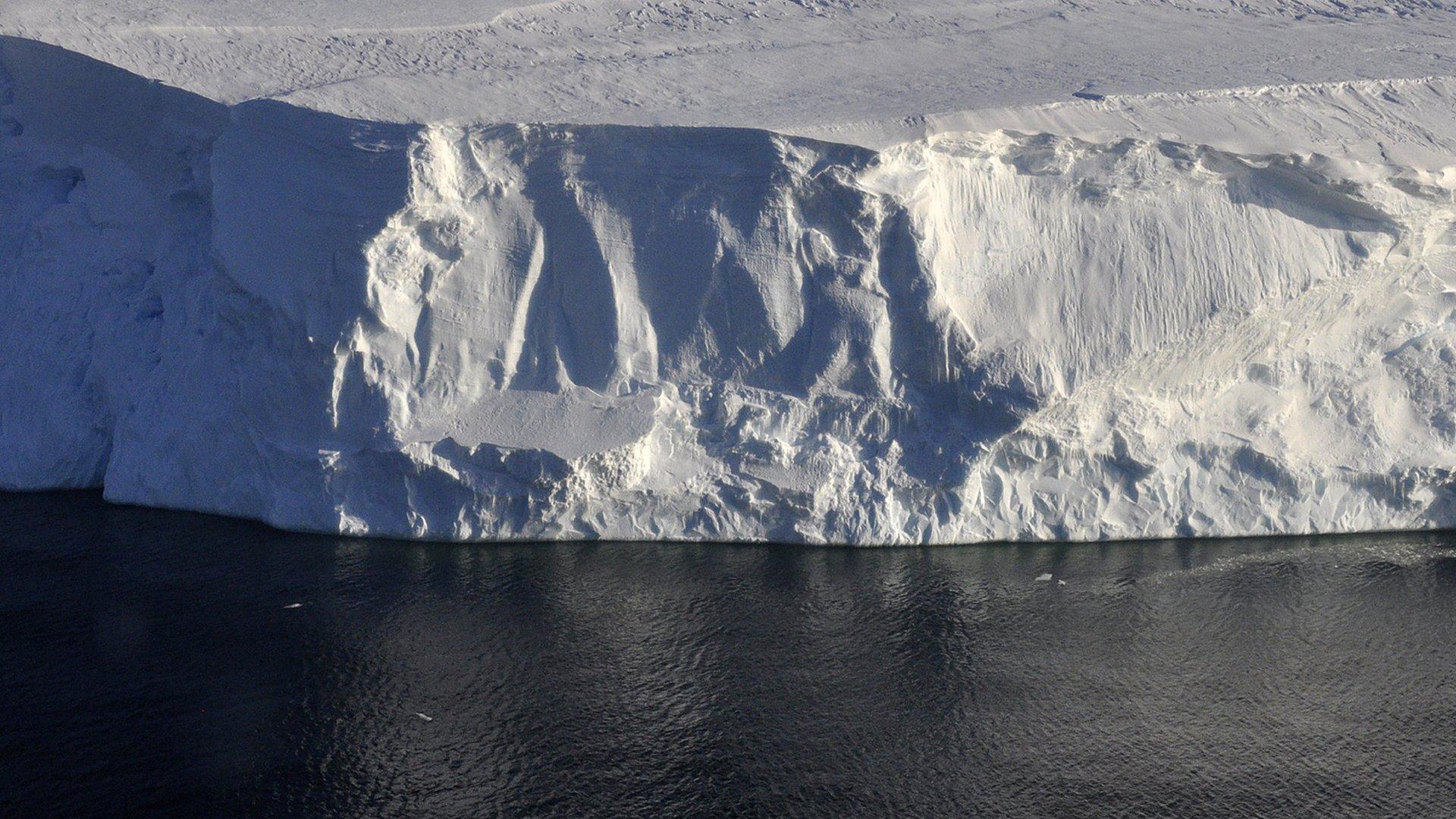
- Published3 March 2020

